We are pleased to present a day of music inspired by Barbara Hepworth’s sculptures, composed and performed by Jazz music students at Leeds Conservatoire, who will play a range of instruments in short performances throughout the day.
Performances will respond to a specific artwork or series of works and will take place in different locations throughout the Barbara Hepworth: Art & Life exhibition.
The project has been developed in collaboration with Jamil Sherrif, Programme Leader (Jazz) at Leeds Conservatoire and will be led by Mark Sanders, Senior Lecturer (Jazz), who will also perform at the event. Mark will be playing with and directing students, showcasing musicianship and improvisation skills developed in workshops and rehearsals.
About the performers
Mark Sanders has had a career taking in many styles and genres, which inform the free improvisation based work he now mainly focuses on. He also works in theatre, dance, contemporary classical and conceptual art contexts and has collaborated with Christian Marclay, Xavier Veillon, Evan Parker, Elaine Michener, Xhosa Cole and in many groups in the UK and in Europe. He has his own group `StaggerLee Wonders` including Black Radical Poetry and Prose, featuring Cleveland Watkiss, Robert Mitchell and Neil Charles.
Sanders is in a longstanding duo with Sarah Gail Brand which has featured on the BBC`s The Stuart Lee Show and in the film Taking the dog for a Walk. He is a Lecturer specialising in Improvisation at Leeds and Birmingham Conservatoires and as a guest tutor The Royal Academy of Music.
Students performing on the day are: Per Alexander, Ophelia Buckton, Jakub Chojnacki, Jay Clelford, Olivia Cuttill, Jarred Kex Dean, Samuel Evans, Johansen Fossheim, Thomas McEwen, Dom Neeson, Miles Pillinger, Devon Salinas-Ordonez, Sophie Grace Speed and Herbie Underwood.
This event forms part of a series of performances and audio-visual works made in response to Hepworth’s work presented alongside our 10th anniversary exhibition Barbara Hepworth: Art & Life.
The programme of events takes place throughout the exhibition and features new and re-staged works by artists, musicians and dancers, many of whom we have worked with over the past ten years. Please see our What’s On listings for details of all events.
Our anniversary events are free but tickets to the Barbara Hepworth: Art & Life exhibition are required. Exhibition tickets are priced at £12 / £10 Concessions / FREE for Members, Wakefield District residents and under 16s. Book your ticket online.







